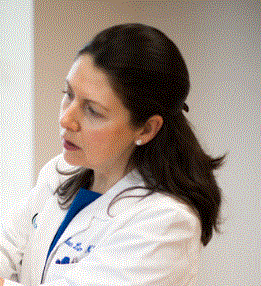Добрый день. У моего 10-ти летнего ребенка очень много экзостозов на ногах. Скажите, пожалуйста, можно ли обойтись без их удаления, если они ничем не мешают моему ребенку? Спасибо.
Сусанна
До 25% экзостозов озлокачествляются, это грозное осложнение, которое в лучшем случае закончится ампутацией конечности, в худшем — смерьтю. По этой причине придется удалять всё, хоть они пока и не мешают.
Дженет Фрейзер
Минуточку!!!!Современная литература говорит о гораздо более низкой частоте озлокачесвляемости от 0.5 до 5 процентов (в разных исследованиях)Это вовсе не так опасноЭти образования обычно растут медленно и не причипяют ни боли ни дискомфорта, только при положении, когда сухожилия или нервы начинают тереться об них, то нужно удалять именно избыточно выросший экзостоз и только. За остальными следить по снимкам раз в пол года до окончания роста ребенка (до 18-20 годам)В тех случаях когда озлокачествление все же происходит то обычно после окончания роста тела , когда продолжается рост одной из шишек, ее обследуют и удаляют даже если и не болит по правилам онкологической ортопедии с сохранением конечности и живут дальше, продолжая наблюдение . для примера цитирую абстракт одного из научных обозрений на эту тему — Multiple osteochondromasJudith VMG Bovée Department of Pathology, Leiden University Medical Center, Leiden, The Netherlands Orphanet Journal of Rare Diseases 2008, 3:3doi:10.1186/1750-1172-3-3 The electronic version of this article is the complete one and can be found online at: http://www. ojrd. com/content/3/1/3 Received: 13 November 2007 Accepted: 13 February 2008 Published: 13 February 2008 © 2008 Bovée; licensee BioMed Central Ltd. This is an Open Access article distributed under the terms of the Creative Commons Attribution License (http://creativecommons. org/licenses/by/2.0), which permits unrestricted use, distribution, and reproduction in any medium, provided the original work is properly cited. AbstractMultiple osteochondromas (MO) is characterised by development of two or more cartilage capped bony outgrowths (osteochondromas) of the long bones. The prevalence is estimated at 1:50,000, and it seems to be higher in males (male-to-female ratio 1.5:1). Osteochondromas develop and increase in size in the first decade of life, ceasing to grow when the growth plates close at puberty. They are pedunculated or sessile (broad base) and can vary widely in size. The number of osteochondromas may vary significantly within and between families, the mean number of locations is 15–18. The majority are asymptomatic and located in bones that develop from cartilage, especially the long bones of the extremities, predominantly around the knee. The facial bones are not affected. Osteochondromas may cause pain, functional problems and deformities, especially of the forearm, that may be reason for surgical removal. The most important complication is malignant transformation of osteochondroma towards secondary peripheral chondrosarcoma, which is estimated to occur in 0.5–5%. MO is an autosomal dominant disorder and is genetically heterogeneous. In almost 90% of MO patients germline mutations in the tumour suppressor genes EXT1 or EXT2 are found. The EXT genes encode glycosyltransferases, catalyzing heparan sulphate polymerization. The diagnosis is based on radiological and clinical documentation, supplemented with, if available, histological evaluation of osteochondromas. If the exact mutation is known antenatal diagnosis is technically possible. MO should be distinguished from metachondromatosis, dysplasia epiphysealis hemimelica and Ollier disease. Osteochondromas are benign lesions and do not affect life expectancy. Management includes removal of osteochondromas when they give complaints. Removed osteochondromas should be examined for malignant transformation towards secondary peripheral chondrosarcoma. Patients should be well instructed and regular follow-up for early detection of malignancy seems justified. For secondary peripheral chondrosarcoma, en-bloc resection of the lesion and its pseudocapsule with tumour-free margins, preferably in a bone tumour referral centre, should be performed. Disease name and synonymsMultiple Osteochondromas (MO) MIM 133700 Hereditary Multiple Exostoses (HME), Multiple Hereditary Exostoses (MHE), EXT, diaphyseal aclasis, (multiple hereditary) osteochondromatosis, multiple cartilaginous exostoses
Dr. Gofman
У экзостозов костей две неприятности. От давления на мягкие ткани могут беспокоить боли от экзостоза. Вторая неприятность, экзостозы после удаления рецидивируют. Злокачественность, довольно сомнительна. С экзостозами так и живут, когда мешает, болит, тогда удаляют, что бы жить не мешал, до следующего раза. Не болит, не мешает экзостоз, его и не трогают. У экзостоза есть ножка, тонкое основание, а это не признак злокачественности.
Валерий Юрьевич
Ответы врачей:
К чему может привести удаление одного экзостоза?
К чему может привести удаление одного экзостоза?
Моей племяннице в четыре года врач поставил диагноз экзостоз
Можно ли обойтись без удаления почки?
У меня поврежден ФРАГМЕНТ медиального мениска, можно ли обойтись без его удаления ?
У меня поврежден ФРАГМЕНТ медиального мениска, можно ли обойтись без его удаления ?
🔔 Или воспользуйтесь поиском на сайте, здесь более 100000 ответов на разные темы.

